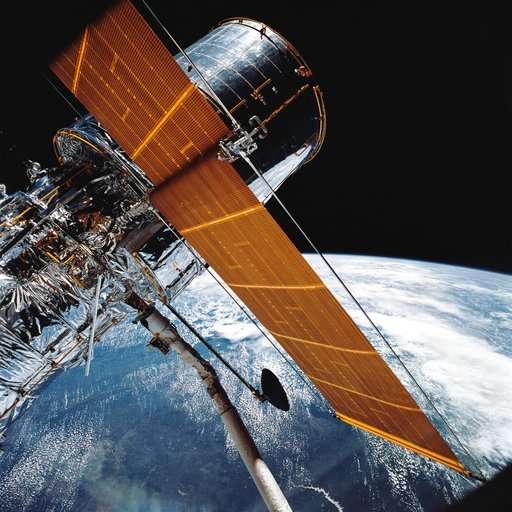Hubble Space Telescope sidelined by serious pointing failure (Update)

The Hubble Space Telescope has been sidelined by a serious pointing problem.
NASA announced Monday that one of Hubble's gyroscopes failed last Friday. While that was expected—that particular gyro was expected to go sometime this year—the surprise came when a backup did not kick in properly Saturday.
As a result, Hubble remains in so-called safe mode and all science observations are on hold.
The 28-year-old telescope has had trouble with its gyroscopes before. Spacewalking shuttle astronauts replaced all six in 2009 during the final servicing mission. Three of them are now considered unusable.
"I think Hubble's in good hands right now, I really do," said Kenneth Sembach, director of the Space Telescope Science Institute, which operates Hubble. "The fact that we're having some gyro problems, that's kind of a long tradition with the observatory."
Gyroscopes are needed to keep the 340-mile-high (540-kilometer-high) Hubble pointed in the right direction during observations. Precise pointing is crucial: Astronomers use the telescope to peer deep into the cosmos, revealing faraway solar systems as well as galaxies and black holes. Just last week, astronomers said they may have discovered the first moon outside our solar system, with Hubble's help.
Since its launch in 1990, Hubble has made more than 1.3 million observations.
Two of Hubble's gyroscopes are working fine, Sembach said. The last one was in reserve; it was turned off some years ago after exhibiting some "funny behavior" even though it was getting the job done, he said. That's the one that flight controllers turned on Saturday as a backup; as of Monday, it still wasn't working as expected.
Sembach said everyone wants to be careful in attempting a repair.
"Obviously, we don't want to make things worse," he said.
Hubble normally uses three gyroscopes to function, but could get by with one or two, something it's done before. But that leaves little room for additional breakdowns. Besides redundancy, three functional gyroscopes also provide more flexibility in pointing, Sembach said.
"We'll be fine," he said from the Baltimore institute. "I'm sure Hubble has many years of good science ahead of it."
© 2018 The Associated Press. All rights reserved.

















